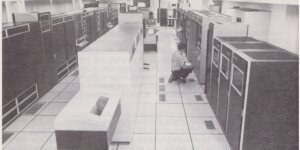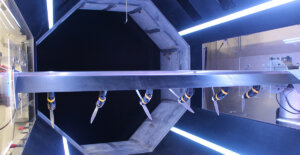
PHOTO/ UNSPLASH, NASA.
Ryan Park, adjunct associate professor of astronautics practice in the USC Viterbi School of Engineering, was recently appointed as Vice President of the X2 – Cross-Division A-F Commission Solar System Ephemerides.
Below is a Q&A on its importance and the future of advancements in understanding the positioning and trajectories of various objects in space.
What is the mission of the commission?
The X2 Commission (Cross-Division A-F Commission Solar System Ephemerides) was created in 2015, from merging the functions of the previous Commission 4 “Ephemerides” and Commission 20 “Positions and Motions of Minor Planets, Comets and Satellites.”
Ephemerides include position, velocity, and orientation for bodies other than the Earth over time. The main objective of this commission is to support the development of high precision ephemerides, and the products/services that disseminate them, for all solar system bodies: planets, dwarf planets, asteroids, comets, distant objects, natural satellites of planets and of asteroids.
Why is it important right now?
The functions of the X2 Commission have always been important; there are many practical and academic reasons that require precise information on orbit and rotational characteristics. One could argue this is important right now because our ability to observe distant and faint objects is getting better, so we want to ensure we have the capability to process the data and produce high-precision ephemerides.
What are the opportunities present from better understanding the trajectories of distant objects?
Unless we have observations taken by a spacecraft (i.e., flyby), the trajectories of distant objects are primarily determined based on either ground-based or space-based telescopes. With the planned LSST and NEO Surveyor, we will be able to observe and discover a lot more planetary objects. Understanding the trajectories of distant objects would provide an improved dynamical model for our solar system, and possibly place a constraint on the existence of another planet.
What are the main challenges of the commission/ problems it is trying to tackle?
The following is from the 2018-2021 report: It is expected that the discoveries of asteroids and comets will continue to increase in the coming years, driven by near-Earth asteroid surveys, but also by the starting of the operations of the Vera Rubin Observatory (previously known as the Large Synoptic Survey Telescope), an extremely powerful instrument among whose goals is a full inventory of the small solar system objects. In this respect, the transition to ADES (data sharing format) that has recently taken place is particularly important, since the vast increase in the number of discoveries could stress the ability of the Minor Planet Center to quickly produce reliable orbits and ephemerides, also in view of the recent discoveries of new classes of small bodies, like interstellar objects and apparently asteroidal objects coming from the Oort Cloud (predicted collection of icy objects farther away than everything else in the solar system).
How does this impact spacecraft missions?
Knowing the orbit and rotational characteristics of a target body is a crucial first step in designing and navigating a mission. For example, the Mars orbit presented in this paper was used by the Mars2020 flight project and played an important role in the successful landing of the Perseverance rover.
How does this impact potential impact events on Earth?
One of the most important problems for potential impact events on Earth is finding/discovering the potentially hazardous objects (PHOs), as well as predicting their orbit. Previously mentioned projects (LSST and NEO Surveyor) would provide important data for both discovering and determining the orbit of PHOs.
Published on September 23rd, 2021
Last updated on September 23rd, 2021









